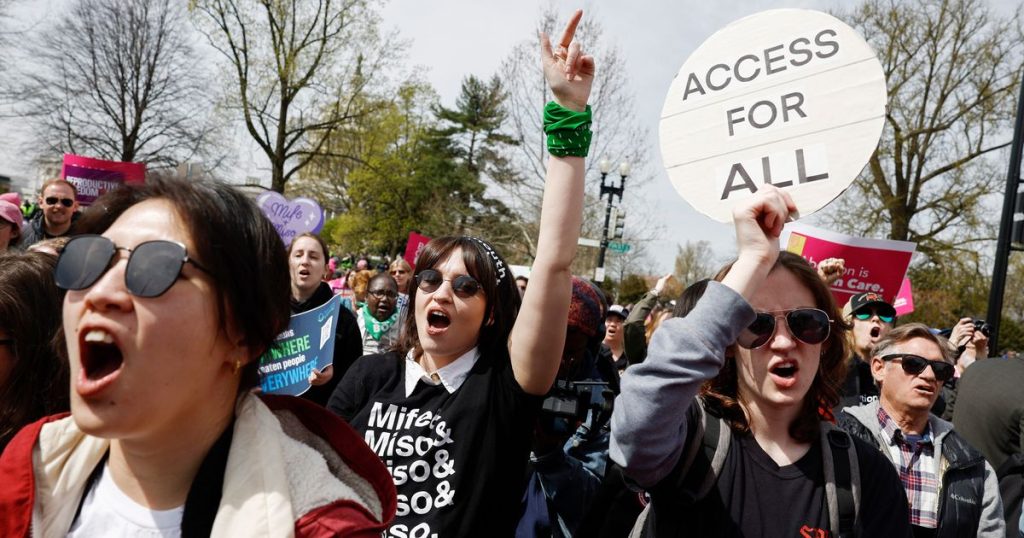Despite the progress made in reproductive rights over the past several decades, advocates are still fighting to protect access to abortion, as demonstrated by a recent demonstration outside the Supreme Court. The case at hand involves the FDA’s regulation of the abortion medication mifepristone, which conservative groups argue is too loosely regulated. The FDA first approved mifepristone in 2000, and changes to the regulations in recent years have eased restrictions, including allowing telemedicine and mail distribution. Abortion rights advocates believe these changes have improved access to safe abortion care.
Protesters gathered outside the Supreme Court, carrying signs, chanting slogans, and participating in a rally to support reproductive rights. Among them was Mira Michels from Aid Access, a group that helps women access abortion pills across the country. Michels brought a robot that dispensed mifepristone pills, demonstrating the safety and effectiveness of the medication. Inside the court, justices seemed skeptical of the conservative doctors group’s standing in the case, questioning the harm they claimed and the need for a nationwide ruling. However, Justice Clarence Thomas referenced a 150-year-old law as a potential strategy to restrict access to abortion.
The ongoing fight over access to mifepristone is seen as part of a larger trend in conservative efforts to roll back government regulations, including those related to women’s reproductive rights. For many older women who have been involved in the fight for abortion rights since the 1970s, the current battle over mifepristone feels like part of a larger and more alarming trend. The protesters, despite feeling scared and frustrated, remain committed to fighting for abortion rights and are urging younger generations to continue the fight.
Despite concerns about the lack of media coverage and the feeling that the protest may be overlooked, demonstrators like Susan from Chapel Hill, North Carolina, remain hopeful and determined. She emphasized the importance of persistence and urged younger generations to advocate for Supreme Court reforms like term limits on justices. Susan, who is also dealing with skin cancer, expressed her determination to continue fighting for women’s rights. She highlighted the need for continued activism and voiced her hope that more people will join the fight for reproductive rights.
The battle over mifepristone and access to safe abortion care is a reminder of the ongoing fight for reproductive rights in the United States. Despite progress made in previous decades, advocates are once again facing challenges in protecting women’s access to essential healthcare services. The recent demonstration outside the Supreme Court is just one example of the determination and resilience of those fighting to ensure that all individuals have the right to make decisions about their own bodies and healthcare. The outcome of the case will have significant implications for reproductive rights and access to safe abortion care in the country.


